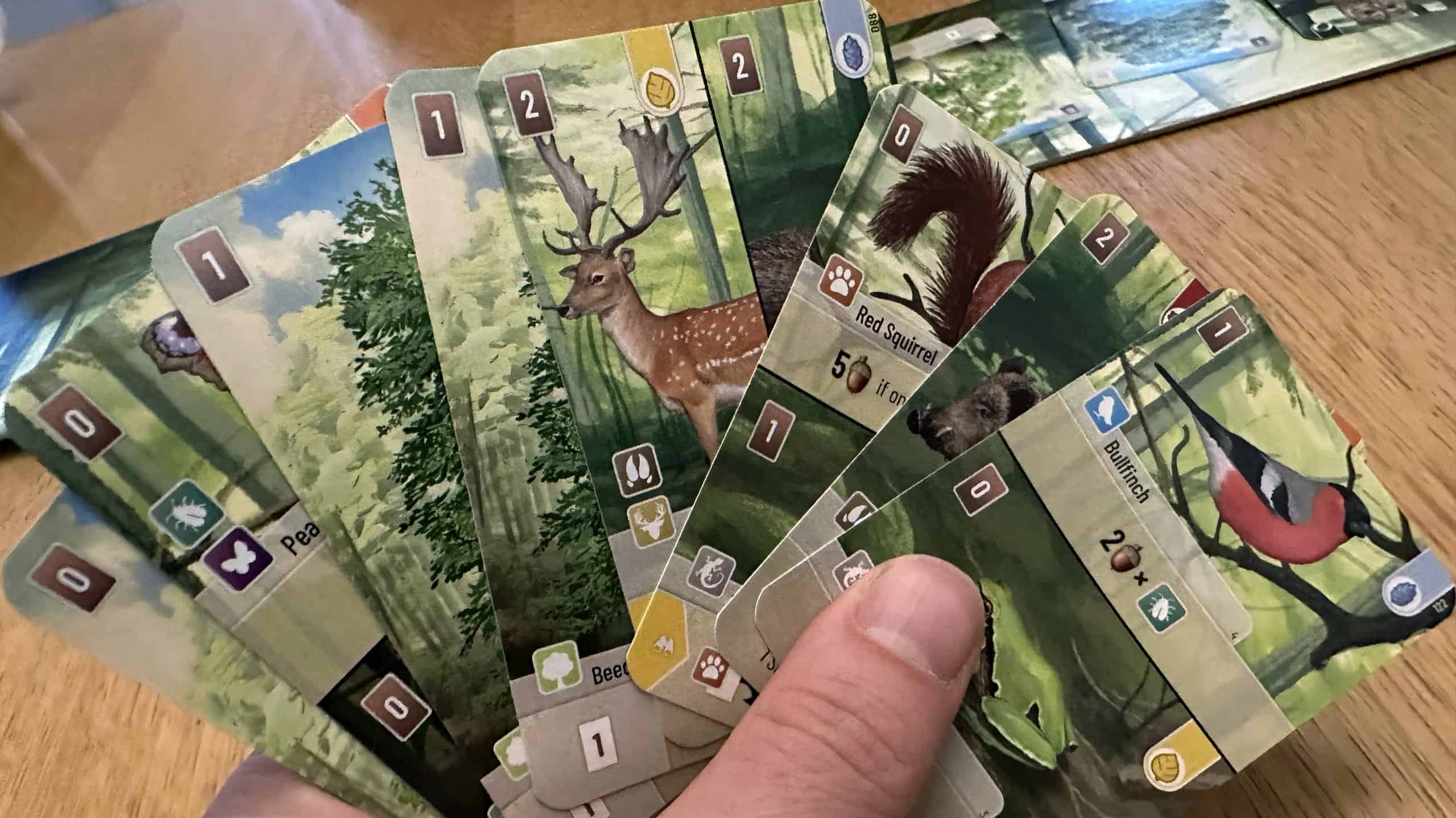I’m currently at 27 plays of Forest Shuffle. The short version: it’s great.
Forget about the balance gripes. It doesn’t matter unless you’re the kind of person intensely annoyed by game balance problems. Sure, sometimes you get lopsided games, but they’re quickly over. I’ve had many games with nail-biting finishes where the end game is a frantic race for points before the game is over.
I’ve tried once with four players; the game was over too soon. I like the two-player game better; it gives you more time to develop your forest. With more experience, I might enjoy the four-player game more. Playing with three players is fine.
Lautapelit.fi has released two games that have been in the works for a while now.
Invasion: Free State was initially planned for release in 2016. It took a while to arrive, but it’s finally here. This is an urban tactical combat game inspired by video games like the original X-COM and its predecessor, Laser Squad. One side controls aliens, the other side human resistance, and then it’s combat on the streets.
Moves are programmed simultaneously. Each character gets an initiative token and can do either two things (move, attack, use a special skill) or do one thing better. Characters act in order of initiative, with the two sides alternating. Movement is based on a simple grid system. Line of sight is also simple; combat is based on die rolls for attack and defence. There’s a clever cover system where you can hide behind corners to get defence bonuses. This also affects the line of sight.
There are different scenarios, and the board is modular. The scenario we played was very simple, about controlling the building in the middle, and it wasn’t terribly satisfying. I expect there are more exciting scenarios. The basic system in the game was nice. It’s not my kind of game, but I wouldn’t mind playing it some more.

All Roads is a delightfully old-school game, very compact and minimalist. Players place tiles to create a road network (making sure all roads lead back to Rome!). If you create a dead-end, you place a house. If an area is encircled by roads, the houses are upgraded to more valuable villas and spas. If you can encircle an empty area, you get a monument. The game lasts for six rounds, and when you’re done, the player with the least pieces remaining wins.
All Roads is a lovely game. It’s very easy to teach and plays quickly. It has some potential for analysis paralysis, as you want to maximize your own results without giving too good opportunities for opponents. On the other hand, there’s a strong shared incentives theme here: encircling an area upgrades buildings for everybody so two players can cooperate. The token reserves are limited: you must adjust your plans when you run out of villas or houses.
This is a neat design. I assume the two-player game is a cutthroat experience; I have a feeling I probably prefer the game with more than two players, as the cooperation is interesting.

The Quest for El Dorado: Dragons, Treasures & Mysteries adds new modules to The Quest for El Dorado. Dragons are meeples on the board that stop movement. You can spend cards to move the dragons out of your way and to hinder your opponents. They’re a bit annoying. Treasures are tiles you can collect by removing many cards from your deck. If you get four treasures, you’ll win the game, so it’s a secondary winning condition. It will be hard, though, and I’m unsure how much I like this possibility. The Mysteries module is the best: it adds seven-hex mist tiles that you only open when you reach them. That adds some unpredictability to the maps.
One Page War is a simple one-page game where you fight Battle Line battles using die rolls to create formations (four of the same, straight, pair and so on). Each player uses the same rolls, so in theory, there’s no luck, and there are special powers you can use to change things. This is a good filler game, especially if you have a tablet, so you don’t have to print out new sheets for every game.
Beyond the Sun: Leaders of the New Dawn adds new stuff to Beyond the Sun. There are new asymmetric features. We didn’t play with the factions but used the leaders module, where each player gets two unique player powers. These powers weren’t game-changing. All in all, the expansion is mostly harmless. I guess get it if you really like the base game and play it a lot; otherwise, don’t bother.

